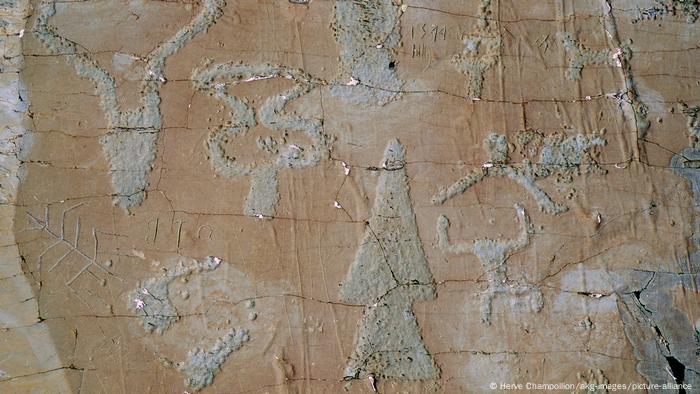Around 4000 years ago, Stone Age painters in south-eastern France immortalized warriors, battle scenes and burials on a rock face. 120 of them have only just been discovered. A significant find, say archaeologists.
 < p>Where ibexes fight today, rock painters were out and about in the Neolithic Age
< p>Where ibexes fight today, rock painters were out and about in the Neolithic Age
As the French regional newspaper “La Provence” reported on Wednesday, the paintings were discovered on a rock in the Mercantour National Park in the French Maritime Alps, only about 20 kilometers from the “Vallée des Merveilles”, the “Valley of Wonders”, which is known for its round 40,000 rock carvings is known. The newly discovered images show warriors, battles and burials.

These rock carvings was found in the “Valley of Wonders”
The President of the Institute of Prehistory and Archeology Alpes-Méditerranée (Ipaam), Claude Salicis, was enthusiastic about the 4000-year-old paintings. As he reported to the newspaper “Nice-Matin”, only two paintings of this type had been identified in the entire district. “Here we have 120 at once. That means that this site is one of the most important in all of Provence,” he said. According to Salicis, the Stone Age painters ground up the local sedimentary rock, mixed it with color pigments and applied their motifs with their fingers.
Accidental find by father and son
Marcel and Loïc Piétri, father and son, discovered the paintings while climbing. The rock face that overlooks the hamlet of La Roche has been used for hiking and climbing trips for a number of years, but it wasn't until the two of them that they noticed it.
The two explorers are deeply rooted in their home region and know the area inside out around Valdeblore near the Italian border very good – not least because of their shared passion for outdoor activities.
Sacred site of Ligurian warriors
In the past, lime was removed from the rock face several times . Certainly some pictures were destroyed. For the Celto-Ligurian warriors of the Neolithic Age, Claude Salicis suspects that the rock was a sacred place, a place of reflection. Unlike the famous Lascaux cave paintings in the Nouvelle-Aquitaine region, the newly discovered rock paintings have been exposed to wind and weather for thousands of years. Nevertheless, the scenery is clearly recognizable.
Traces of people and “archaic human species”, as they are called, date back up to a million years in the French Mediterranean region.